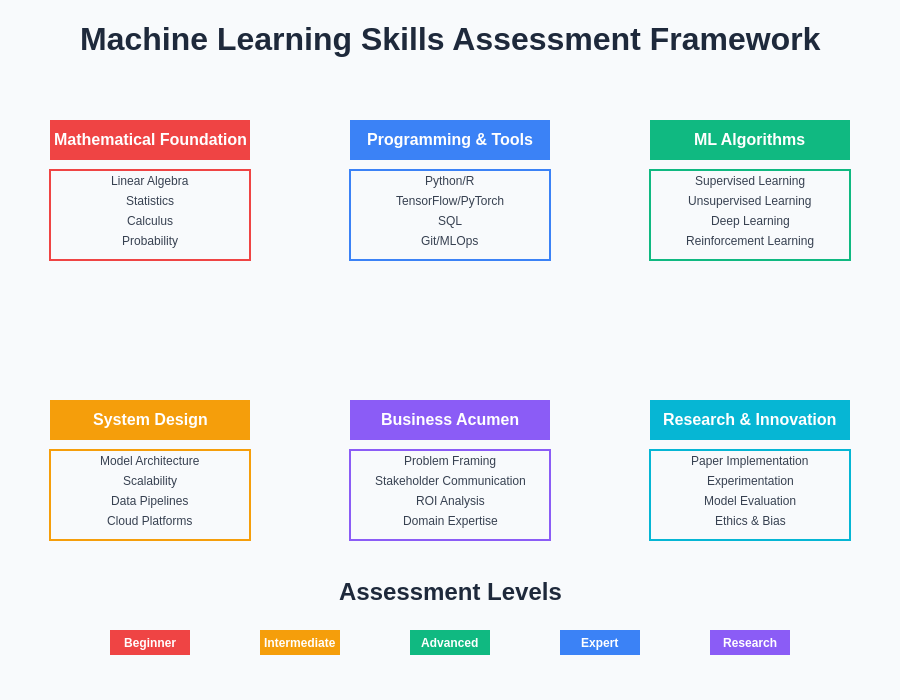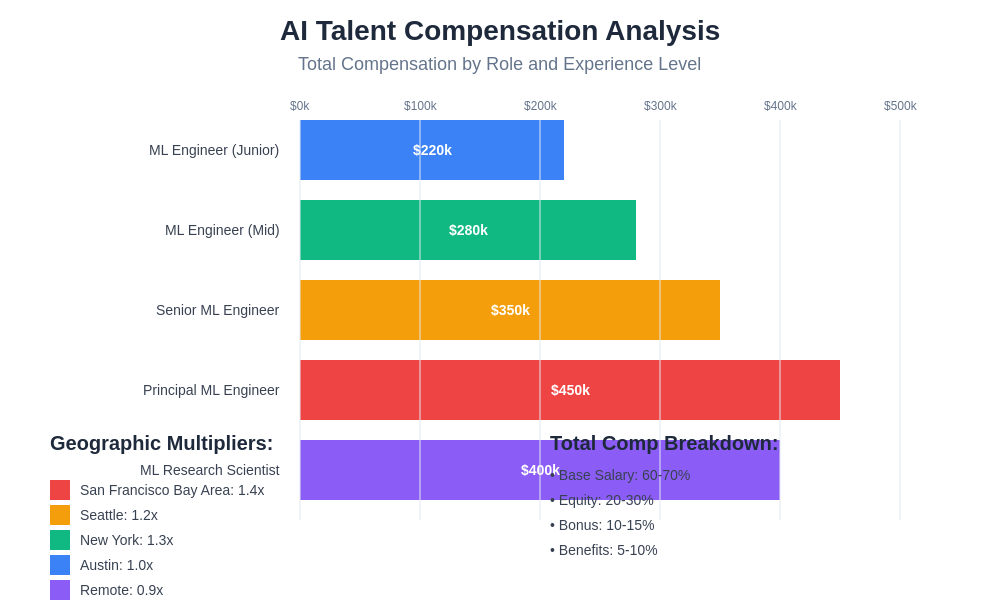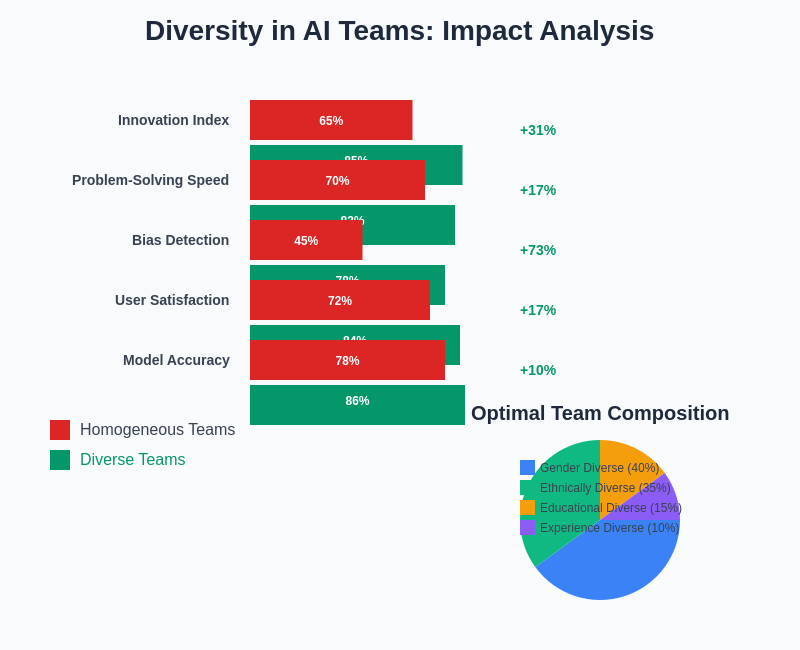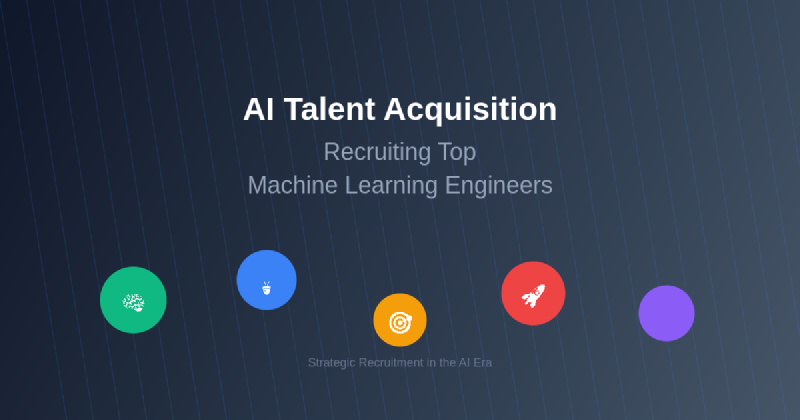The artificial intelligence revolution has created an unprecedented demand for skilled machine learning engineers, transforming the talent acquisition landscape into one of the most competitive and challenging environments in modern recruitment. Organizations across industries are racing to build AI capabilities, driving salaries to extraordinary heights and creating a seller’s market where top talent can command premium compensation packages and selective employment opportunities. This intense competition has fundamentally altered traditional recruitment approaches, requiring innovative strategies and deep technical understanding to successfully identify, attract, and retain exceptional AI professionals.
The scarcity of qualified machine learning engineers has reached critical levels, with demand far outstripping supply across major technology hubs worldwide. Companies are not merely competing for talent within their industry sectors but are engaged in a global battle that spans technology giants, financial institutions, healthcare organizations, automotive manufacturers, and emerging startups. This competition has created a paradigm shift in how organizations approach talent acquisition, moving beyond traditional recruitment methodologies to embrace sophisticated strategies that recognize the unique characteristics and motivations of AI professionals.
Explore the latest AI trends and insights to understand the rapidly evolving landscape that drives talent demand and shapes the expectations of machine learning professionals. The complexity of modern AI recruitment requires a comprehensive understanding of technical competencies, market dynamics, and the evolving career aspirations of professionals who are at the forefront of technological innovation.
Understanding the AI Talent Landscape
The machine learning engineering profession encompasses a diverse range of specializations and expertise levels, creating a complex talent ecosystem that requires nuanced understanding for effective recruitment. Unlike traditional software engineering roles, machine learning positions demand interdisciplinary knowledge spanning mathematics, statistics, computer science, domain expertise, and increasingly, business acumen. This multifaceted requirement has created distinct career paths including research scientists, applied machine learning engineers, data platform engineers, MLOps specialists, and AI product managers, each requiring tailored recruitment approaches.
The educational backgrounds of successful machine learning engineers vary significantly, with professionals entering the field through computer science programs, mathematics and statistics degrees, physics and engineering disciplines, and increasingly through specialized AI and data science programs. This diversity in academic preparation creates challenges for recruiters who must evaluate candidates across multiple educational paradigms while assessing practical skills that may have been acquired through self-directed learning, online courses, or professional experience rather than formal academic programs.
Geographic distribution of AI talent has created distinct regional characteristics that influence recruitment strategies and compensation expectations. Silicon Valley and Seattle continue to serve as primary talent hubs with the highest concentration of experienced professionals, but emerging centers in Austin, New York, Toronto, London, and Singapore have developed unique talent ecosystems with distinct characteristics and competitive dynamics. Understanding these regional nuances is crucial for organizations developing comprehensive talent acquisition strategies that can compete effectively across multiple markets.
Identifying Core Competencies and Skills
Successful machine learning engineers possess a combination of technical depth and practical application abilities that distinguish them from traditional software developers. Core mathematical foundations including linear algebra, calculus, statistics, and probability theory form the theoretical backbone of machine learning expertise, while programming proficiency in Python, R, and increasingly specialized frameworks like TensorFlow, PyTorch, and JAX provides the practical implementation capabilities necessary for building production systems.
The evaluation of technical competencies requires sophisticated assessment methodologies that go beyond traditional coding interviews to include algorithm design challenges, mathematical problem-solving scenarios, and practical machine learning system design questions. Top candidates demonstrate not only theoretical knowledge but also practical experience with model training, hyperparameter optimization, feature engineering, and model deployment across various computing environments including cloud platforms, edge devices, and distributed systems.
Domain expertise has become increasingly valuable as organizations seek machine learning engineers who can bridge the gap between technical implementation and business application. Professionals with experience in specific industries such as healthcare, finance, autonomous systems, or natural language processing command premium compensation and have greater selectivity in career opportunities. This specialization trend has created niche talent pools that require targeted recruitment approaches and deep industry knowledge from hiring teams.

The complexity of evaluating machine learning competencies necessitates a structured approach that balances theoretical knowledge with practical application abilities, ensuring that recruitment processes accurately identify candidates who can contribute effectively to production AI systems while continuing to innovate and adapt to rapidly evolving technologies.
Building Compelling Employer Value Propositions
The competition for machine learning talent has elevated the importance of employer value propositions beyond traditional compensation and benefits packages. Top AI professionals are motivated by opportunities to work on cutting-edge problems, access to high-quality data and computing resources, intellectual freedom to explore innovative approaches, and the potential for significant impact on product development and business outcomes. Organizations that successfully attract top talent create compelling narratives around technical challenges, research opportunities, and the potential for professional growth within rapidly expanding AI initiatives.
Leverage advanced AI tools like Claude to enhance your recruitment process with intelligent candidate screening and personalized outreach strategies that resonate with technical professionals. The most effective employer value propositions combine technical excitement with clear career progression pathways and competitive compensation structures that reflect the current market dynamics and future growth potential.
Access to cutting-edge technology and research resources has become a critical differentiator in attracting top machine learning talent. Organizations that provide access to large-scale computing infrastructure, proprietary datasets, and opportunities for publication and conference participation create compelling environments for professionals who are motivated by technical innovation and professional recognition. This includes providing access to GPU clusters, cloud computing credits, research collaboration opportunities, and support for attending major AI conferences and workshops.
The cultural environment and team composition significantly influence the attractiveness of opportunities for machine learning professionals. Top candidates seek environments with high technical standards, collaborative peer networks, and leadership that understands the unique requirements of AI development including experimentation cycles, model iteration processes, and the inherent uncertainty involved in research and development activities. Organizations that foster cultures of technical excellence while providing autonomy and creative freedom consistently attract and retain exceptional AI talent.
Sourcing Strategies and Talent Pipeline Development
Traditional recruitment channels have proven insufficient for identifying and accessing top machine learning talent, necessitating innovative sourcing strategies that leverage technical communities, research networks, and specialized platforms. The most effective talent acquisition teams develop multi-channel approaches that include engagement with academic institutions, participation in AI conferences and workshops, active involvement in open-source communities, and strategic partnerships with specialized recruitment firms that focus exclusively on AI and machine learning roles.
Academic partnerships provide access to emerging talent through relationships with leading computer science programs, research laboratories, and faculty members who can provide referrals and insights into promising students and researchers. These relationships require long-term investment and genuine engagement with academic communities rather than transactional recruiting approaches. Organizations that establish meaningful academic partnerships often gain early access to exceptional talent while building reputations as desirable employers within academic circles.
Open-source contributions and technical publications provide valuable signals for identifying high-quality candidates who may not be actively seeking new opportunities. Machine learning engineers who contribute to major frameworks, publish research papers, or maintain popular repositories demonstrate both technical competence and commitment to advancing the field. Sourcing strategies that monitor these activities and engage with contributors through technical discussions rather than traditional recruitment outreach often yield higher response rates and stronger candidate interest.
Professional networks and referral programs remain the most effective sources of high-quality machine learning talent, with existing team members serving as valuable ambassadors who can attract former colleagues and professional contacts. The tight-knit nature of the AI community means that reputation and word-of-mouth recommendations carry significant weight in career decisions. Organizations that invest in maintaining strong relationships with current and former employees often benefit from expanded networks and higher-quality referrals.
Technical Assessment and Interview Processes
The evaluation of machine learning candidates requires sophisticated assessment methodologies that accurately measure both theoretical knowledge and practical application abilities while respecting the time constraints of highly sought-after professionals. Traditional whiteboard coding interviews are insufficient for evaluating the complex problem-solving abilities required for successful machine learning engineering, necessitating multi-stage processes that include algorithm design challenges, system architecture discussions, and practical implementation exercises.
Take-home projects provide opportunities for candidates to demonstrate their ability to work with real-world datasets, implement complete machine learning pipelines, and make thoughtful engineering decisions about model selection, feature engineering, and evaluation methodologies. These assessments should reflect actual work challenges while being respectful of candidates’ time constraints. The most effective take-home assignments can be completed within a reasonable timeframe while providing meaningful insights into candidates’ technical abilities and problem-solving approaches.
Technical presentations and whiteboard sessions allow for evaluation of communication skills, teaching ability, and depth of understanding across various machine learning topics. Top candidates should be able to explain complex concepts clearly, justify their technical decisions, and demonstrate awareness of trade-offs and limitations in their approaches. These sessions also provide opportunities to assess cultural fit and collaborative abilities that are crucial for success in team-oriented AI development environments.
System design interviews specific to machine learning applications evaluate candidates’ understanding of production AI systems including data pipelines, model serving infrastructure, monitoring and maintenance requirements, and scaling considerations. These discussions reveal practical experience with the engineering challenges involved in deploying and maintaining machine learning systems in production environments, which is increasingly important as organizations move beyond experimental AI implementations to business-critical applications.
Enhance your recruitment intelligence with Perplexity for comprehensive market research and competitive analysis that informs strategic talent acquisition decisions. Understanding market trends and competitor strategies provides crucial context for developing effective recruitment approaches and competitive compensation packages.
Compensation Strategies and Market Dynamics
The compensation landscape for machine learning engineers has reached extraordinary levels, with total compensation packages for senior professionals at major technology companies frequently exceeding traditional software engineering roles by significant margins. This escalation reflects both the scarcity of qualified professionals and the strategic importance of AI capabilities for organizational competitiveness. Understanding current market rates requires continuous monitoring of compensation trends across different geographic regions, company sizes, and specialization areas.
Equity compensation has become particularly important for machine learning roles, with professionals increasingly evaluating opportunities based on long-term value creation potential rather than base salary considerations alone. Organizations that provide meaningful equity participation while clearly communicating the potential for value creation often succeed in attracting candidates who might otherwise choose higher base salary offers. This trend reflects the understanding among AI professionals that their contributions can significantly impact organizational value and competitive positioning.

The structure of compensation packages must reflect the unique career motivations and risk tolerances of machine learning professionals, many of whom prioritize learning opportunities, technical challenges, and professional growth over purely financial considerations. However, competitive base salaries remain essential for attracting top talent, particularly for professionals with families or financial obligations that require predictable income streams.
Specialized roles command premium compensation with research scientists, principal engineers, and AI architecture specialists receiving significantly higher packages than general machine learning engineers. Organizations must carefully evaluate the specific expertise required for their initiatives while developing compensation structures that reflect both market realities and internal equity considerations. This often requires separate compensation frameworks for AI roles that acknowledge the unique market dynamics affecting these positions.
Onboarding and Integration Excellence
The successful integration of machine learning engineers requires specialized onboarding processes that address both technical and cultural adaptation needs. Unlike traditional software roles, machine learning positions often involve complex toolchains, proprietary datasets, and specialized infrastructure that can take months to master fully. Effective onboarding programs provide structured pathways for new hires to become productive while building the relationships and contextual knowledge necessary for long-term success.
Technical onboarding must include comprehensive introductions to data sources, computing environments, existing model architectures, and development workflows that may be significantly different from candidates’ previous experiences. This includes access to documentation, training datasets, and mentorship relationships with experienced team members who can provide guidance on both technical and organizational best practices. The most successful programs combine formal training components with hands-on projects that allow new hires to make meaningful contributions while learning organizational systems and processes.
Cultural integration involves helping machine learning engineers understand business contexts, stakeholder relationships, and organizational decision-making processes that influence AI development priorities and resource allocation. This includes exposure to product teams, business stakeholders, and executive leadership who can provide context about strategic objectives and success metrics. Machine learning professionals who understand business contexts are more likely to develop solutions that create meaningful organizational value while advancing their own career objectives.
Mentorship and peer support networks provide crucial foundations for long-term retention and professional development. The complex and rapidly evolving nature of machine learning work requires ongoing learning and adaptation that is best supported through collaborative relationships with experienced professionals. Organizations that invest in formal mentorship programs and create opportunities for knowledge sharing often achieve higher retention rates and faster professional development among their AI talent.
Retention Strategies and Career Development
Retaining exceptional machine learning engineers requires understanding their unique career motivations and providing opportunities for continuous learning, professional growth, and meaningful impact. The rapid pace of AI advancement means that professionals must continuously update their skills and knowledge to remain effective, creating opportunities for organizations to provide value through learning and development investments that support both individual growth and organizational capabilities.
Career progression pathways for machine learning engineers must accommodate diverse interests including technical leadership, research directions, product management transitions, and entrepreneurial opportunities. The most effective retention strategies provide multiple advancement options that allow professionals to pursue their interests while contributing to organizational objectives. This includes opportunities for technical leadership roles, research collaborations, conference presentations, and involvement in strategic decision-making processes.
Professional development support should include conference attendance, course enrollments, research collaboration opportunities, and time allocation for exploring emerging technologies and methodologies. Organizations that provide generous professional development budgets while encouraging experimentation and learning often achieve higher retention rates and benefit from the innovation that results from continuous skill development among their AI teams.
Recognition and impact visibility help machine learning engineers understand how their contributions affect organizational success and broader industry advancement. This includes clear communication about how models and systems impact business metrics, opportunities for external visibility through publications and presentations, and involvement in strategic planning processes that demonstrate the value placed on their expertise and insights.
Building Diverse and Inclusive AI Teams
Diversity and inclusion in AI talent acquisition requires proactive strategies that address systemic barriers and create welcoming environments for professionals from underrepresented backgrounds. The machine learning field has historically suffered from significant diversity challenges that limit both talent pool access and innovation potential. Organizations that prioritize inclusive recruitment practices often access broader talent pools while building teams that bring diverse perspectives to complex technical and ethical challenges.
Recruitment process modifications should include diverse interview panels, bias training for hiring team members, and structured evaluation processes that reduce the influence of unconscious bias on hiring decisions. This includes standardized interview questions, objective scoring criteria, and regular review of hiring outcomes to identify and address potential bias patterns. The most effective programs combine process improvements with cultural changes that create genuinely inclusive environments.
Pipeline development programs can help address long-term diversity challenges through partnerships with educational institutions, support for underrepresented students, and mentorship programs that encourage career transitions into machine learning roles. These initiatives require sustained investment and commitment but often yield significant benefits in terms of both talent access and organizational reputation within diverse professional communities.
Inclusive team environments require ongoing attention to communication patterns, decision-making processes, and recognition systems that ensure all team members can contribute effectively and feel valued for their contributions. This includes awareness of different communication styles, flexible work arrangements that accommodate diverse needs, and leadership development programs that prepare managers to support diverse teams effectively.

The business case for diverse AI teams extends beyond moral imperatives to include improved problem-solving capabilities, reduced bias in AI systems, and enhanced innovation potential that results from diverse perspectives and experiences. Organizations that successfully build inclusive AI teams often achieve superior technical outcomes while creating competitive advantages in talent attraction and retention.
Future Trends and Strategic Implications
The evolution of AI talent acquisition continues to accelerate as the field matures and organizational AI adoption expands across industries and applications. Emerging trends include increased specialization within machine learning roles, growing importance of AI ethics and responsible AI expertise, and expanding demand for professionals who can bridge technical implementation with business strategy and regulatory compliance requirements.
The geographic distribution of AI talent is expanding as remote work becomes more accepted and organizations compete globally for exceptional professionals. This trend is democratizing access to opportunities while increasing competition intensity and creating new challenges for organizations that must compete with global talent markets. Understanding these dynamics requires sophisticated market analysis and flexible recruitment strategies that can adapt to changing geographical and competitive landscapes.
Educational pipeline development is evolving with new degree programs, certification offerings, and alternative credentialing systems that aim to address talent supply challenges. Organizations that engage proactively with these educational innovations while developing relationships with emerging talent sources will be better positioned to access future talent pools and influence curriculum development to meet industry needs.
The integration of AI into recruitment processes themselves presents opportunities for improving efficiency and effectiveness while raising important questions about bias, fairness, and candidate experience. Organizations that thoughtfully implement AI-powered recruitment tools while maintaining human oversight and ethical standards may achieve competitive advantages in talent acquisition efficiency and quality.
The continued advancement of AI technologies will likely create new specialization areas and skill requirements that current recruitment strategies must anticipate and prepare for. This includes emerging areas such as AI safety, federated learning, quantum machine learning, and AI-human collaboration systems that may define the next generation of machine learning engineering roles.
Conclusion
The recruitment of exceptional machine learning engineers represents one of the most challenging and strategically important talent acquisition activities in modern business. Success requires sophisticated understanding of technical competencies, market dynamics, compensation trends, and the unique motivations that drive AI professionals in their career decisions. Organizations that develop comprehensive strategies encompassing sourcing, assessment, compensation, onboarding, and retention while building inclusive cultures that foster innovation and professional growth will be best positioned to attract and retain the exceptional talent necessary for AI-driven competitive advantage.
The investment in building world-class AI recruitment capabilities pays dividends far beyond individual hiring successes, creating organizational reputations that facilitate ongoing talent attraction while building internal capabilities that support sustained AI innovation and competitive positioning. As the AI revolution continues to reshape industries and create new possibilities for value creation, the organizations that successfully navigate the talent acquisition challenges will emerge as leaders in the AI-driven economy.
Disclaimer
This article provides general guidance on AI talent acquisition strategies and should not be considered as legal, financial, or professional advice. Recruitment practices must comply with applicable employment laws and regulations, which vary by jurisdiction. The compensation information and market trends discussed reflect general observations and may not apply to specific situations or geographic regions. Organizations should conduct their own market research and consult with legal and compensation professionals when developing recruitment strategies and compensation packages.
